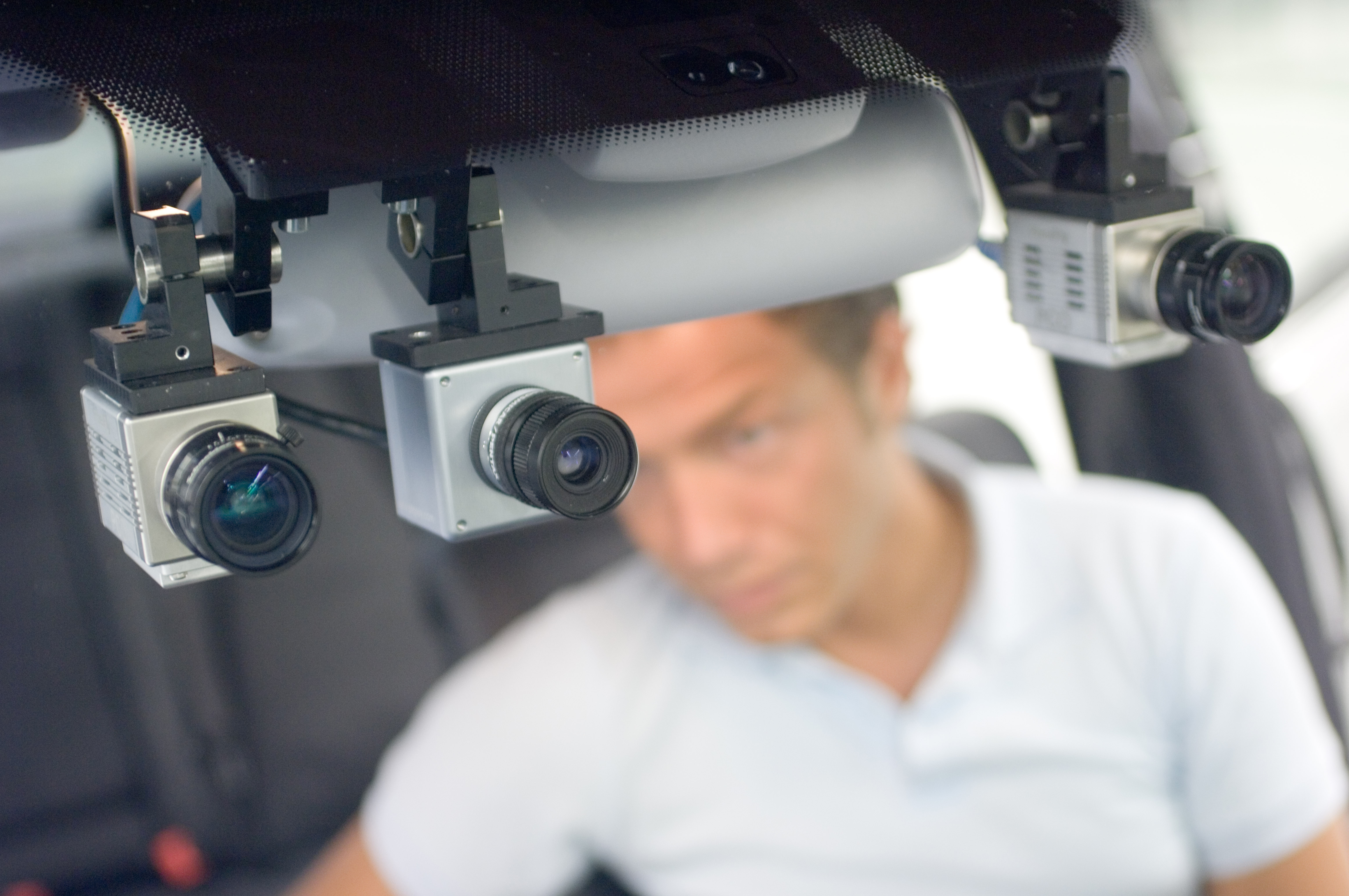
Call 4 will include work to rationalise and productionise some of the in-vehicle detection technologies developed under the auspices of previous European Commission projects (Picture: Daimler)
Juhani Jääskeläinen, head of the ICT for Transport Unit, DG Information Society and Media, European Commission, details the results of Call 4 for research projects in ICT for transport
Since the closure of the call and evaluation process during the summer of last year theIn Call 4, two areas were open for focused research actions and large-scale integrating projects: ICT for Intelligent Vehicle Systems; and ICT for Clean and Efficient Mobility. Funding was also available for Coordination and Support Actions (CSAs) in the field of international cooperation, user awareness, and support for the Intelligent Car Initiative and the e-Safety Forum.
The call for proposals for ICT for Intelligent Vehicle Systems was aimed at increasing road traffic safety through in-vehicle systems. It is in line with the work done over several years in previous European Union (EU) framework programmes and other FP7 calls. This call focused in particular on advanced systems, including autonomous driving assistance functions, new approaches to accident avoidance and better Human-Machine Interfaces.
Although ICT for Clean and Efficient Mobility has been high on the political agenda since the beginning of FP7, proposals in this area submitted to the former calls did not manage to compete successfully with those on safety. As a result, ICT for Clean and Efficient Mobility was again included in Call 4, resulting in one Integrated Project (IP) in this domain, and a Specific Targeted REsearch Project (STREP) in the area of fully electric vehicles. These both contribute to the EC's European Green Cars Initiative, one of the public-private partnerships which form part of the European Economic Recovery Package.
The Intelligent Car Initiative (whose work is partly funded through CSAs) and the eSafety Forum, one of the pillars of the Intelligent Car Initiative, are essential to raising awareness and ensuring that the results of EU-funded research move from concept to real-life application. Therefore, support actions are needed to sustain their work as well as to contribute to standardisation and international cooperation.
The Commission received in total 75 proposals and decided to fund 10 of those projects - two large-scale integrating projects, five focused research actions and three coordination and support actions - for a total funding value of €53 million.
Intelligent vehicle systems
Four STREPS and one IP have been selected from the proposals received for the call under ICT for Intelligent Vehicle Systems.The INTERACTIVE IP builds on its predecessor project PReVENT, which was one of the major projects on road safety managed by the EC's ICT for Transport unit. PReVENT developed a range of safety applications to establish a 'virtual safety belt' around a vehicle and had started integrating some of these standalone systems into one system. INTERACTIVE aims to integrate applications such that components may be shared by different safety systems. This will be achieved through discrete architectural layers common to all applications. In this way, the relevant knowledge about driver, vehicle and environmental status can be made available to each application and allow optimal use of resources and lower implementation costs. The project targets next-generation safety systems based on a three-pillar concept: continuous driver support; collision avoidance; and collision mitigation. This novel approach will be demonstrated in five cars and one truck.
The 2WIDE_SENSE and MiniFAROS STREPs both aim to develop innovative sensor systems which ally novel types of sensors for an affordable price. This will open the way to link these sensors together with safety and comfort applications into medium- and lower-class cars.
2WIDE_SENSE will develop a new type of CMOS camera integrating different spectral bands into one camera system (visible spectrum, near-infrared, short-wave infrared) as a multiple-purpose sensor which can be used independently by several applications. This sensor will be designed to provide: reliable and robust perception in complex road situations (such as missing lane markings in tunnels or bridges); reliable obstacle (including vulnerable road users) detection and classification with reduced environmental influences and false positive rates, at high recognition rates; and determination of friction (road status monitoring) and better scene perception in critical visibility conditions (fog, mist, rain and at night). These are of great value for the assistance tasks related to safety functions.
MINIFAROS will develop a laser scanner based on a completely new concept with a large field of view (up to 300°). This will help to reduce considerably the price and size of this type of sensor. It will therefore be used by multiple applications, especially in the vicinity of the ego vehicle, such as those for lane departure, keeping and changing, blind spot monitoring and collision mitigation. The scanner can also be used as an infrastructure-based sensor providing collected information via Infrastructure-to-Vehicle (I2V) communication to the vehicle.
The final projects in the area of safety applications, OVERSEE and MOSARIM, will tackle generic safety problems resulting from the increasing complexity of IT applications. They will reduce the risk of harmful interference between different IT applications and the risk of interference due to the higher penetration of different radar systems.
OVERSEE will create an open vehicular IT platform that provides a protected, standardised, in-vehicle runtime environment and onboard access and communication point. This is necessary as the next generation of intelligent vehicular ICT applications for advanced traffic management, active vehicle safety, or the 'green' electric car, strongly depends on the availability of an ICT infrastructure combining both dependability and security attributes. Thus, future intelligent vehicles: have to provide an appropriate wireless access point to their onboard IT systems and vehicle applications need in turn appropriate access to external information and applications; and have to execute multiple independent applications with different levels of importance concurrently and in a trusted manner. Therefore, the main objectives of the OVERSEE platform will be IT security and dependability; that means enforcing a strong level of isolation between independent applications and ensuring that vehicle functionality and safety cannot be harmed by any OVERSEE application.
Radar systems have been used for vehicle safety and comfort applications
for several years but the problems of interference between different systems have not been tackled. Higher take-up of radar systems will unavoidably lead to problems. MOSARIM is working on an assessment of these possible interferences to come up with a common understanding of this problem and a first set of recommendations and guidelines.
Clean and efficient mobility
Two projects have been funded in the area of ICT for Clean and Efficient Mobility: eCoMove, working on cooperative systems for eco-driving; and ELVIRE, in the field of electric vehicles.The eCoMove IP will enhance the functionalities of cooperative systems, which have been developed within the EU's 6th Framework Programme in the area of energy efficiency. The project aims to minimise the energy used to transport people and goods via different ICT applications. eCoMove builds on a set of common core technologies of applications: ecoSmartdriving for eco-driving support for car drivers; ecoFreight & Logistics, for both eco-driving support for trucks and eco-freight and logistics management; and ecoTrafficManagement & Control to develop applications for cooperative eco-traffic network. All systems will be validated and evaluated to test the performance and effectiveness of these applications in urban, non-urban and motorway environments.
Electric vehicles can help reduce CO2 emissions but today's batteries give them a shorter range than conventional cars. To overcome these issues, ELVIRE is developing an onboard electric energy communication and service platform that will serve as an interface between the car and the electricity infrastructure, thus encouraging future use of electric vehicles.
Addressing awareness
The third area of Call 4 consists of three funded support actions which address user awareness and support of the Intelligent Car Initiative and the e-Safety forum.Logistics for Life brings together the different stakeholders in the area of logistics and freight transport in order to create: a network of all energy-efficient initiatives in the area; a framework to link stakeholders' efficiency requirements to sustainability of transport and relevant ICT solutions; a roadmap for their implementation combined with coordinated dissemination; and a working platform for users and developers of such ICT systems.
eSafety Challenge will address the third pillar of the Intelligent Car Initiative: dissemination of information to the public. It will promote the take-up and use of intelligent vehicle systems enhancing road safety through awareness campaigns directed at both the general public and policy-makers. The focus will be on safety-related areas but ICT-enhanced eco-driving will also be considered.
iCar Support will support the implementation and recommendations of the eSafety forum. It will provide direct support to the activities of the forum, strengthen cooperation among stakeholders, contribute to the implementation of eCall and give further support to the Intelligent Car Initiative.
With this portfolio of projects, the EC continues its commitment to the development of systems for active safety and collision avoidance, while making significant inroads into the research in ICTs for energy efficiency and new technologies for fully electric vehicles and their integration into the transport system. INTERACTIVE, ECOMOVE and ELVIRE will spearhead the EC's push towards safer, cleaner and smarter transport in Europe.
This paper expresses the personal views of the author and in no way constitutes a formal or official position of the European Commission.










